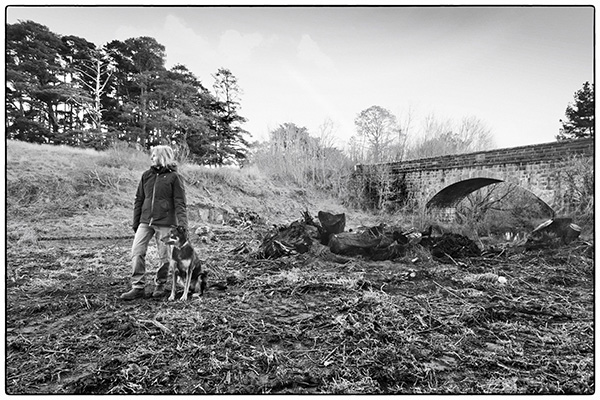July 17th, 2022War on the willows takes its toll
ON A recent morning, while approaching the once tranquil creek near her Kingston home, Virginia Imhoff, pictured with Buddy, was stopped in her tracks by this destruction.
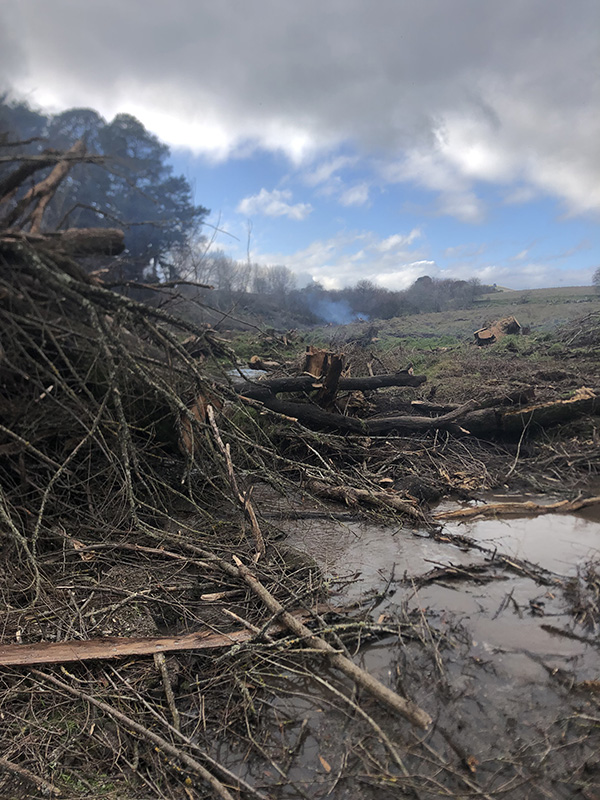
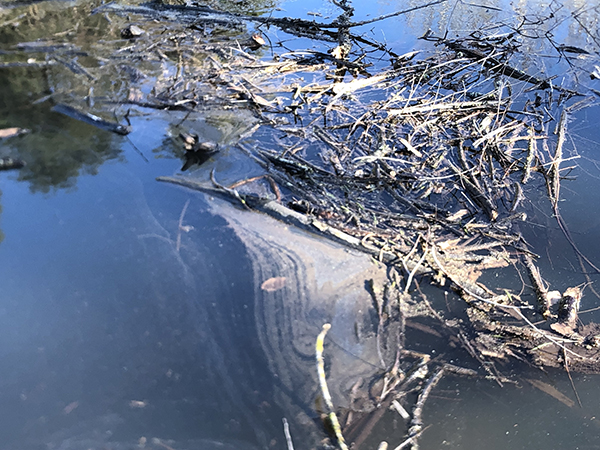
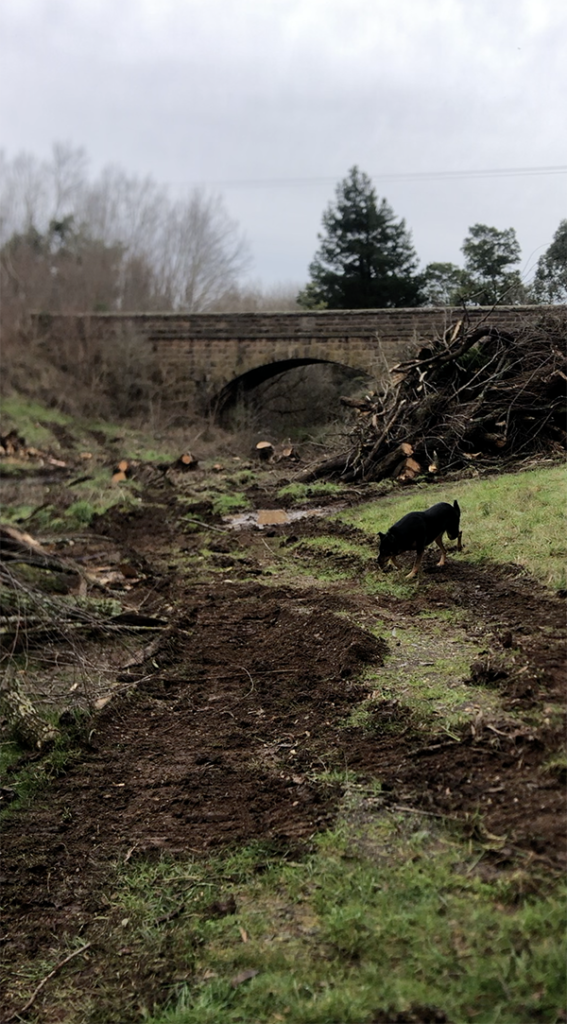
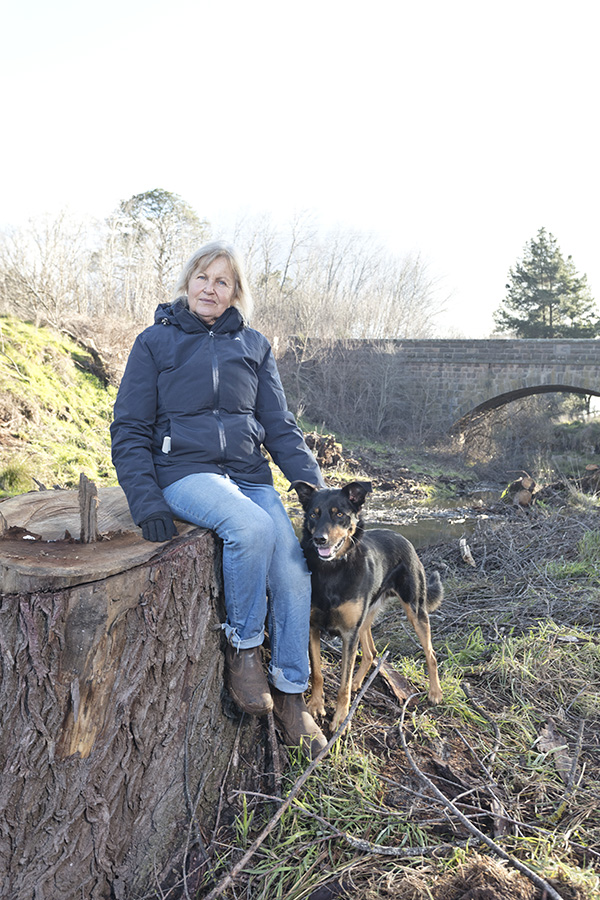
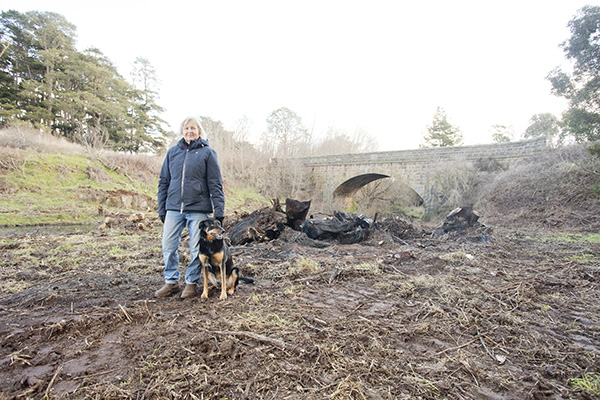
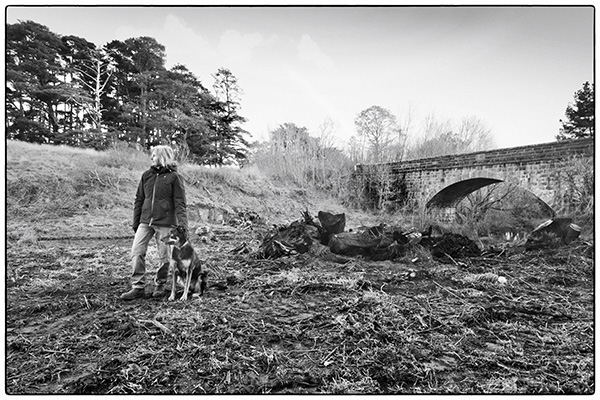
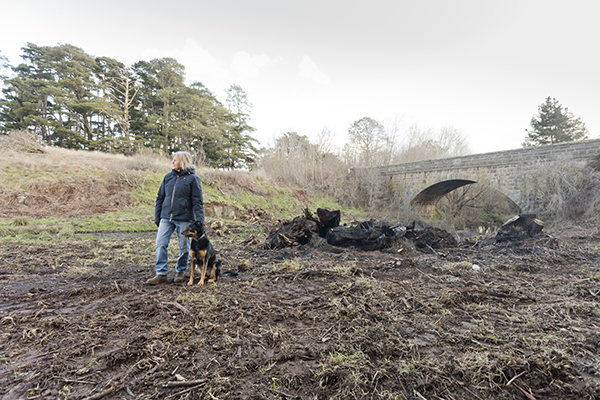
After being poisoned, willows along Bullarook Creek Streamside Reserve had been cut down, bulldozed into big piles and set on fire, with logs tossed in the water and used as a makeshift bridge for heavy equipment. This machinery made some of the banks collapse and the water was thick with rich red volcanic soil.
Among her worries was that the creek is a platypus habitat and a vital corridor for all kinds of birds and other wildlife, such as wallabies and kangaroos. “Wallabies might be plentiful in the forests around the shire, but in this narrow corridor they are in small numbers and as such are ‘endangered’ by traffic and other disturbances,” she says. “And it appears there has been no great care to ensure this important platypus habitat is protected.”
Until about four years ago, she often saw koalas crossing open land to find the few manna gums still on farms in the district. Now koalas are rare.
At this reserve a copse of tall manna gums remains, planted in the 1990s by children from the former Kingston Primary School in parkland now overgrown.
The creek flows under heritage-listed Kerrins Bridge, a handsome keystone arch of bluestone, dating from about 1860. Virginia sees the creek as creating a link for wildlife to forests around the edges of the fertile, open and highly cultivated farmland of the Kingston district. “For some wildlife it’s the only cover they have and for the lack of native bush, they have adapted well to living among what is mainly introduced tree species.”
She watched smoke rising from the valley for a couple of days before realising what was going on. “One huge pile of logs even straddled the creek from bank to bank, and was burning in the water, sending up palls of smoke, there was an oil slick on the water, and ash and soot, logs and debris clogging the waterway like a beaver dam.” The mess extended for about 500 metres, with some stumps of hawthorn painted red with glyphosate, a non-selective “aquatic-safe” herbicide.
“Proper catchment management would not do this,” she says, adding that Creswick ward councillor Don Henderson had undertaken to ask the responsible state minister about the work.
“Any water pollution including the diesel, or whatever the oil slick is, and the debris, logs and mud is going to affect platypus and other aquatic species downstream,” she says.
“And wallabies and other wildlife will be left with no cover and be pushed out of here. ut there is nowhere for them to go. A wallaby was hit and killed on the road here in the daytime this week, and that is unusual because they tend to rest under cover during the day.”
Bullarook Creek flows northwest towards Clunes, where it links with Tullaroop Creek, which flows into the Tullaroop reservoir near Carisbrook, forming part of the Loddon River Catchment.
Virginia and her husband bought their farm and moved to the district in 1980 with their four children. On their 60 hectares of land, she runs a few Suffolk sheep, and grows hay for her 21 horses, many of them rescued or old horses needing a home.
Over the years she has also set aside part of the property and planted around 3000 native trees for woodland and shelterbelts, and fenced some areas around dams and springs for native vegetation and bird and wildlife habitat. (“For snakes, too,” she says with a laugh). “It’s also important to have some stepping stones of bush and habitat on private land for animals and birds that move through the district.”
The coincidental timing of the work at Bullarook Creek Streamside Reserve raised alarm bells in the wider community because the route through the reserve has also been earmarked by AusNet for its 80-metre high transmission towers, as part of the Western Victoria Transmission Network Project, which is planned to deliver renewable energy from windfarms in the state’s west to Melbourne. The transmission line will heavily affect farms, landscape and communities.
Back down at the creek, as we stood in the mud, a voice asked what we were doing there. It belonged to Lang Dowdell, who’s supervising the work for the North Central Catchment Management Authority.
The authority’s job is to manage “water for the environment flows to a range of regulated rivers, wetlands, swamps and lakes across our region”.
At the heart of all this destruction is the labelling of willows as invasive species.
While describing the scene as “stark”, Lang said the willows were a noxious weed of national significance detrimental to the water. He assured us that the area would be revegetated with native plant species, trying to take it back to how it was before European settlement. Lang disagreed with Virginia that oil slicks in the water had been caused by the heavy equipment – or fire accelerants.
He hopes that eventually there will be more protection for native species, with the return of grass cover within a year. And that the blackwoods and other native plant species planned to be planted once the creek is cleared will grow quickly to stabilise the banks and provide habitat. The land we were on, he said, would repair itself quickly. The improved water quality would attract bugs that would help the ecosystem and the clearing of willows would allow more light on the creek.
“We hope to finish the clear-up by the end of the week.”
Most adjoining landholders bordering the creek had been cooperative, he added. One adjoining farmer, whose land runs down to the creek, allowed fencing higher up on his land to protect remnant native kangaroo grasses from grazing and for newly planted trees to establish. But further along the bank a bunch of white tree guards are empty of plantings two years ago, evidence of severe frosts in the valley.
Indigenous people have been involved in the work, says Lang, adding that the Dja Dja Wurrung had done an assessment that would determine what plant species go in and how the land at Bullarook Creek Streamside Reserve is used.
And, to top it off, he foresees a time when this area will return to its beautiful state, and might even have seats and picnic tables. A vision far from today’s sight.
Story by Kevin Childs


